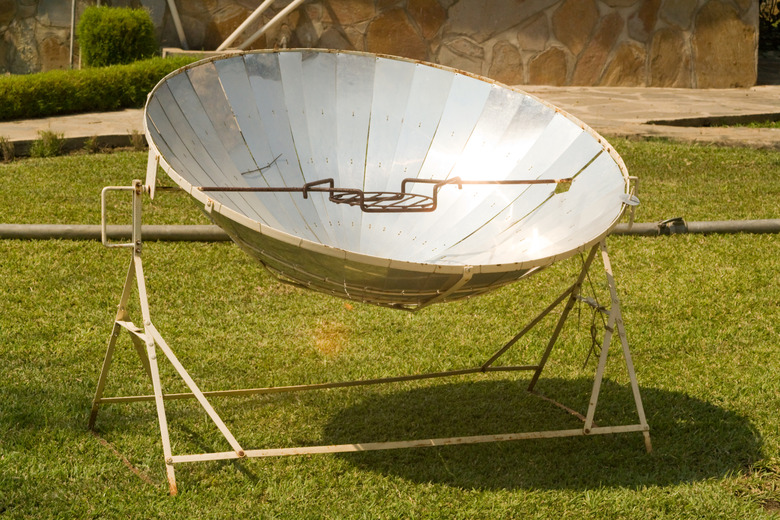Solar Oven Facts
Every time a clock's second hand ticks, the sun converts four million tons of mass into energy. Because it's millions of miles away, the sun won't vaporize the planet, but it can help you bake a tasty pizza. You won't obtain high enough temperatures to do that by leaving food in the sunlight — even on the hottest day — unless you use a solar oven and let the harnessed power of a trillion megaton bombs cook meals for you.
Solar Energy Meals: Pros and Cons
Solar Energy Meals: Pros and Cons
It may take longer for a solar oven to make your favorite dish, but the benefits may offset that inconvenience. If you like to save money, rejoice because you won't need to spend it on fuel for a solar oven. No fuel means no open flames that can cause fires. Food rarely burns because it cooks slowly, and your workload is minimal since you usually don't need to stir anything. Finally, a solar oven's portability makes it easy to transport.
Additional Global Benefits
Additional Global Benefits
A solar oven's benefits may vary depending on where it is used. In less-developed countries, these ovens eliminate the need for women and children to spend time gathering fuel for cooking. In forested areas, the ovens help slow deforestation by eliminating the need to harvest wood for fuel. A solar oven's portability becomes even more important when it can help people prepare meals when they're isolated from power and fuel. Solar ovens also help protect the planet's environment since the don't use fossil fuel.
The Cooking Power of Focused, Trapped Energy
The Cooking Power of Focused, Trapped Energy
Several types of solar oven exist, but they all work by focusing the sun's energy onto your meals. Panel ovens, which usually have multiple panels, reflect light onto food. Parabolic ovens — usually the best cookers — focus light as well, but that light arrives at a single focal point where heating occurs. If you get one of these ovens, place food at that focal point for best results. Box ovens function like greenhouses, trapping infrared radiation inside the container after light waves enter through an opening. You can cover that opening with clear plastic, but glass traps heat better.
Maximize Your Solar Cooking Experience
Maximize Your Solar Cooking Experience
A solar oven functions more efficiently if you remember a few important tips. Ensure that the cooking container is dark and its reflective material is smooth; dark colors absorb more energy than light ones. It also helps to position your solar oven so that it directly faces the sun. Seal a solar oven tightly and insulate it well to keep heat from leaving the container. If you cook dishes that contain liquid, seal them inside the oven; this prevents heated water from condensing and covering the container.
Cite This Article
MLA
Lee, Kevin. "Solar Oven Facts" sciencing.com, https://www.sciencing.com/solar-oven-5365247/. 24 April 2017.
APA
Lee, Kevin. (2017, April 24). Solar Oven Facts. sciencing.com. Retrieved from https://www.sciencing.com/solar-oven-5365247/
Chicago
Lee, Kevin. Solar Oven Facts last modified March 24, 2022. https://www.sciencing.com/solar-oven-5365247/
